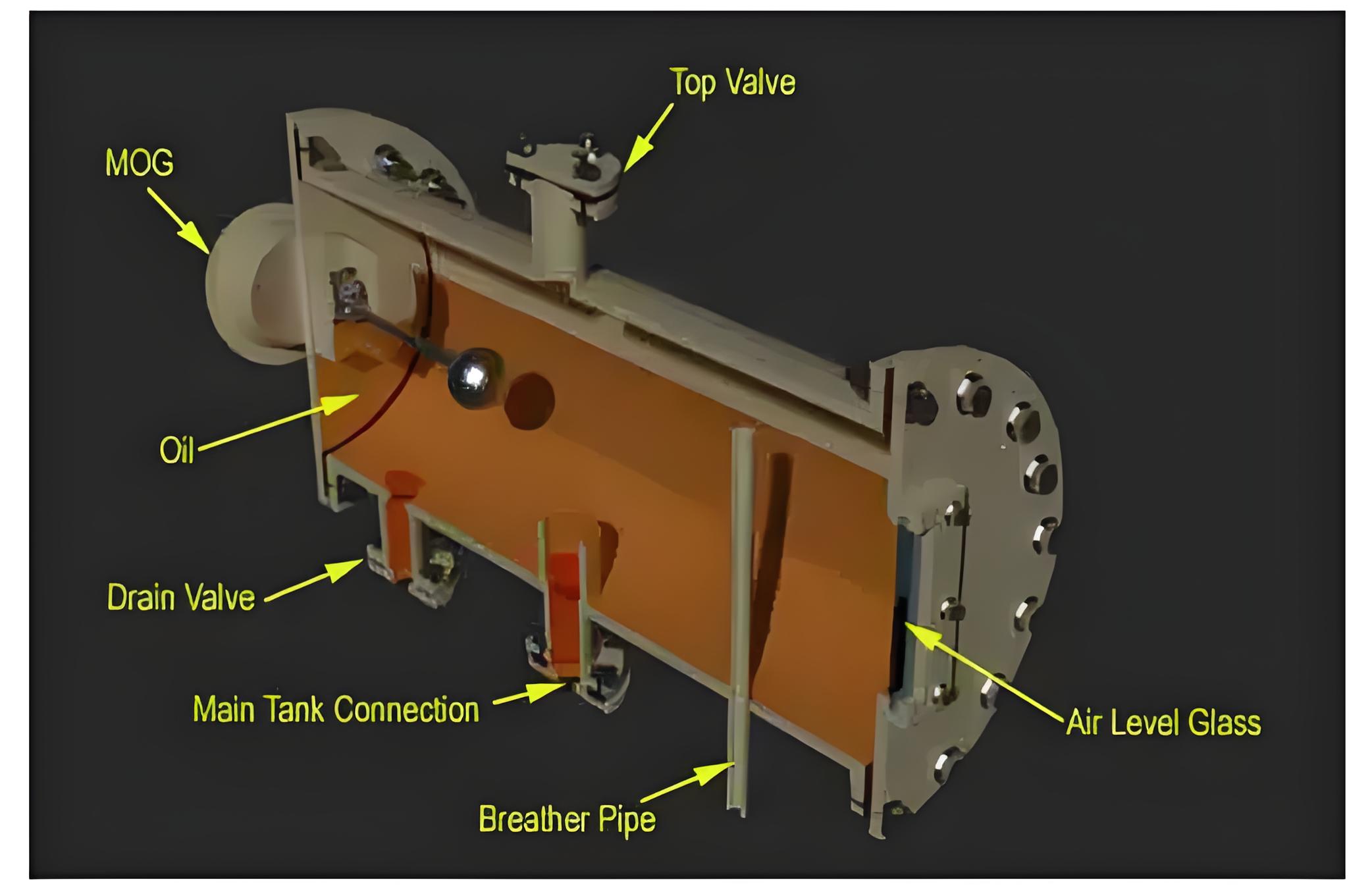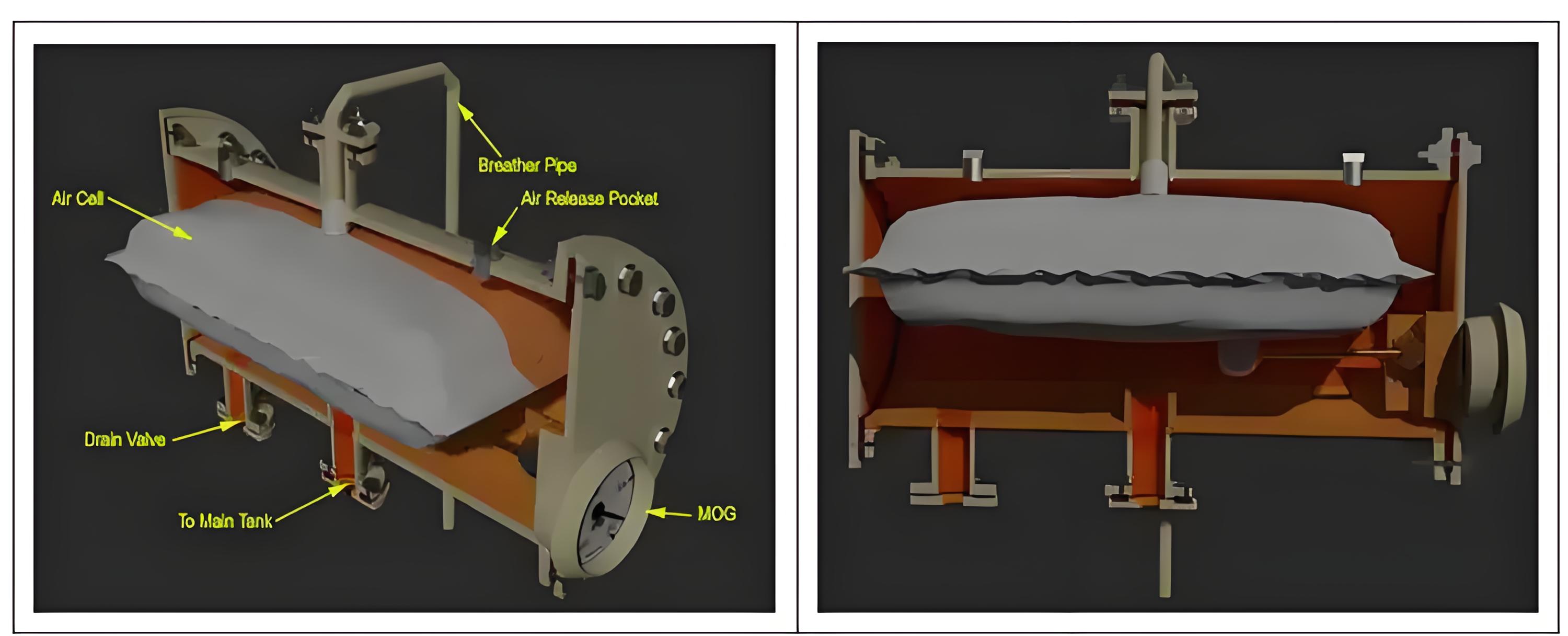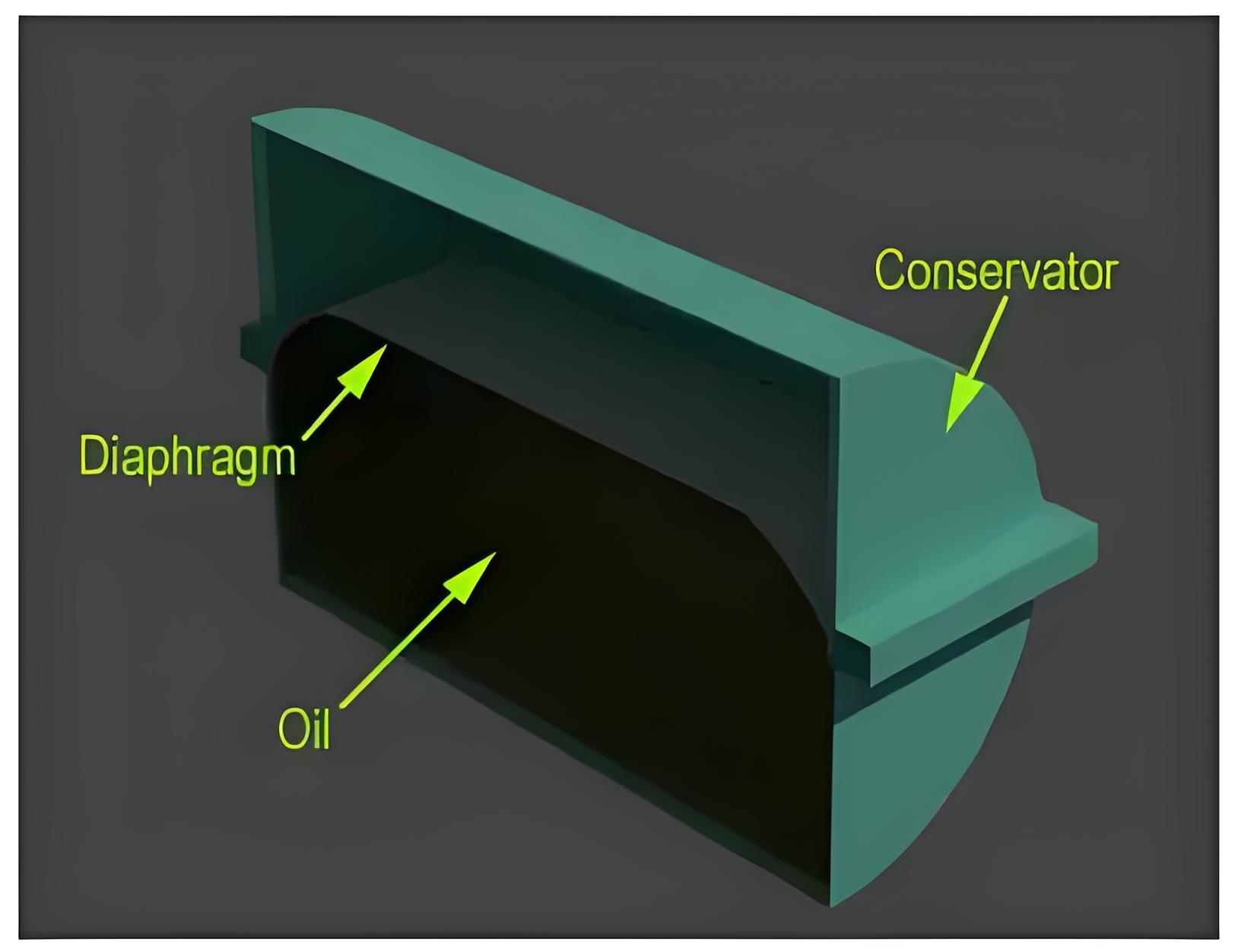What is Conservator Tank of Transformer?
What is Conservator Tank of Transformer?
Conservator Tank Definition
A conservator tank is a cylindrical container on a transformer, providing space for the oil to expand and contract.
Function
The conservator tank allows transformer oil to expand when hot and contract when cool, preventing overflow and ensuring efficient operation.
Construction
The conservator tank is a cylindrical oil container closed at both ends. It has a large inspection cover on each side for easy maintenance and cleaning.
Conservator pipe, i.e. pipe comes from main transformer tank, is projected inside the conservator from bottom portion. Head of the conservator pipe inside the conservator is provided with a cap. This pipe is projected as well as provided with a cap because this design prevent oil sludge and sediment to enter into main tank from conservator. Generally silica gel breather fixing pipe enters into the conservator from top. If it enters from bottom, it should be projected well above the level of oil inside the conservator. This arrangement ensure that oil does not enter the silica gel breather even at highest operating level.

Working of Conservator Tank
When the insulating oil expands due to load and temperature, it partially fills the conservator tank, pushing out air through the breather. When the load decreases or the temperature drops, the oil contracts, allowing outside air to enter the conservator tank of transformer through the silica gel breather.
Atmoseal Type Conservator
In this type conservator of transformer, an air cell made of NBR material is fitted inside the conservator reservoir. The silica gel breather is connected at the top of this air cell. The oil level in the power transformer rises and falls according to this air cell deflated and inflated. When the air cell gets deflated the air inside the air cell comes out via breather and on the other hand if the cell is inflated the outside air comes in through breather.
This arrangement prevents direct contact of oil with air, thereby reduces ageing affect of oil.

The space available outside the cell in conservator tank is totally filled by oil. Air vents are provided on the top of the conservator for venting accumulated air outside the air cell.
The pressure inside the air cell must be maintained 1.0 PSI.
Diaphragm Sealed Conservator
This conservator uses a diaphragm to keep oil and air separate, preventing gas bubble formation that can cause insulation failure.

Sum up
The oil storage tank is essential to the normal operation of the oil-immersed transformer, and reasonable maintenance and maintenance can ensure the safety and reliability of the transformer.
The Electricity Encyclopedia is dedicated to accelerating the dissemination and application of electricity knowledge and adding impetus to the development and innovation of the electricity industry.













